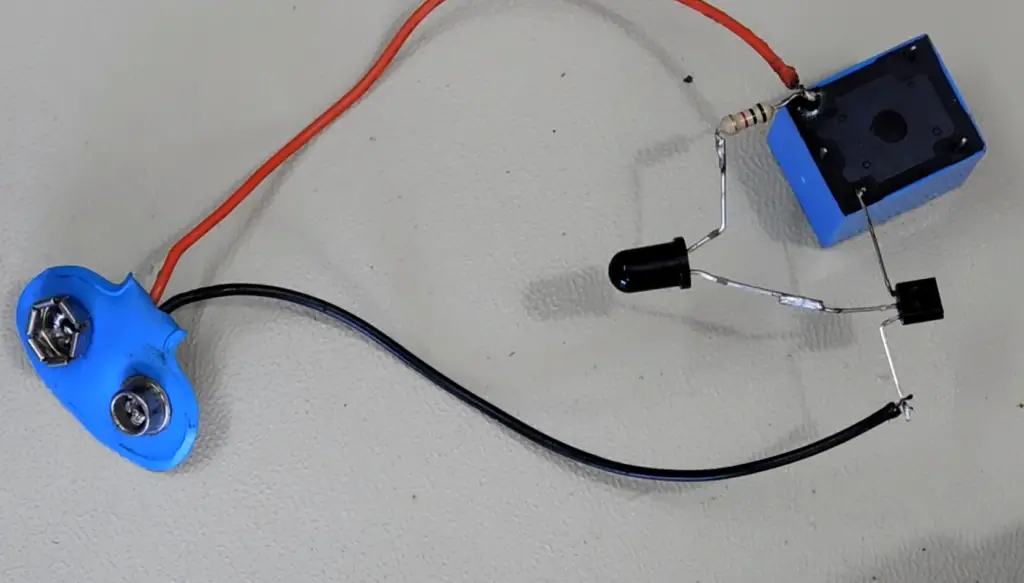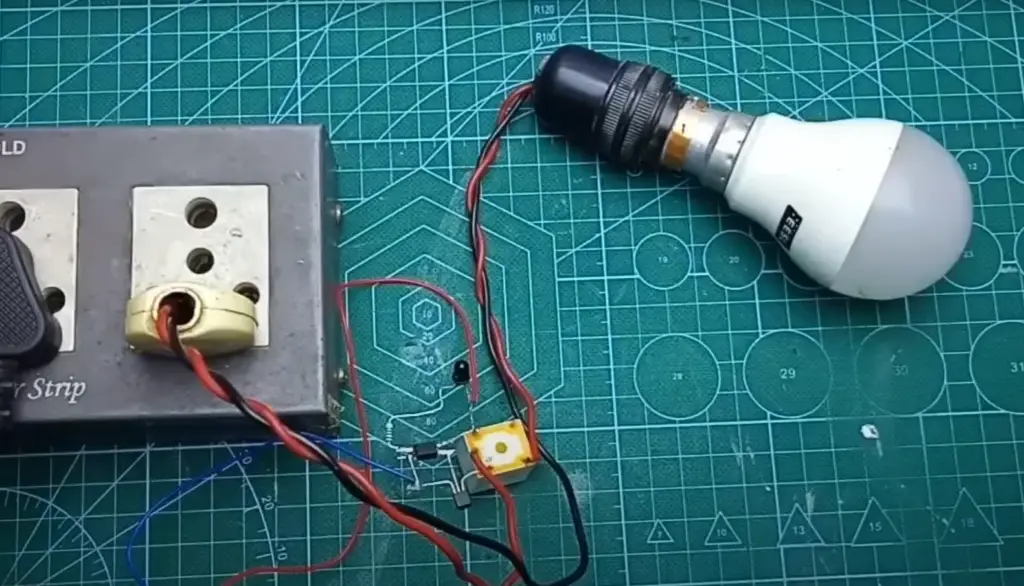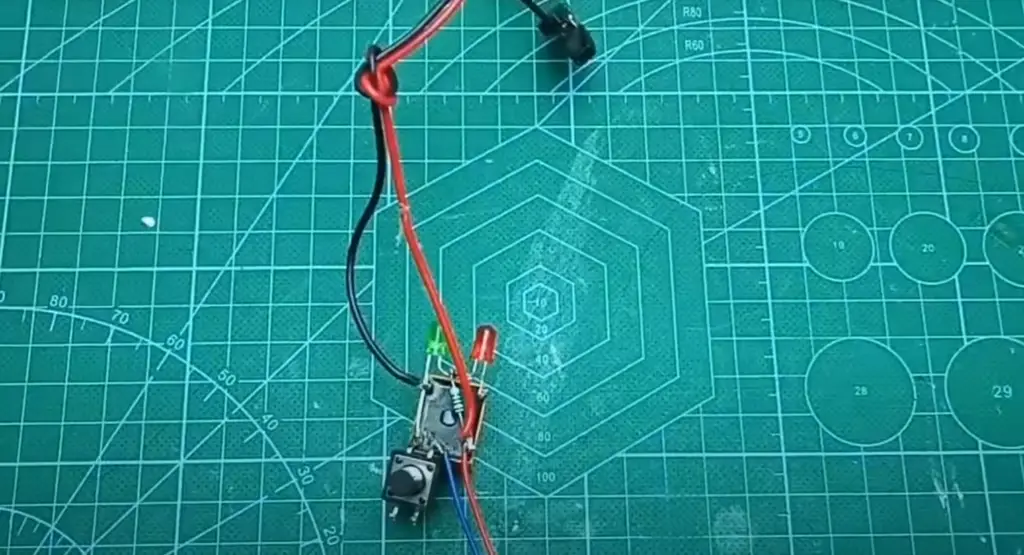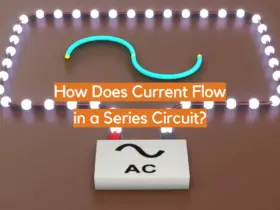Photodiode arrays are essential components in various optical systems, offering the capability to simultaneously detect and measure light at multiple points or pixels. Understanding how photodiode arrays work is crucial for optimizing their performance in applications such as imaging, spectroscopy, and optical sensing. These arrays consist of multiple photodiodes arranged in a two-dimensional grid, with each photodiode acting as a pixel.
When light strikes the array, each photodiode generates a photocurrent proportional to the incident light intensity. The combined output from all the photodiodes forms an image or spatial distribution of the detected light. This article delves into the working principles of photodiode arrays, their operation in different modes, and their diverse applications.
Photodiode Definition

In addition to their fundamental functionality as light detectors, photodiodes can be integrated into larger electronic systems. They are often used in conjunction with amplifiers, filters, and other components to optimize their performance and meet specific application demands.
Photodiode Working Principle
Photodiodes are constructed using a p-n junction, similar to a standard diode. The p-n junction consists of a p-type semiconductor region and an n-type semiconductor region.
The p-type region is doped with impurities that create an excess of positively charged holes, while the n-type region is doped with impurities that create an excess of negatively charged electrons. The region where the p-type and n-type materials meet forms the depletion region, which is devoid of free charge carriers.
When light is incident on the photodiode, photons with energy greater than the bandgap energy of the semiconductor material can be absorbed. This absorption process creates electron-hole pairs within the depletion region. The electric field present in the depletion region due to the built-in potential causes the electrons and holes to separate, resulting in a photocurrent. The magnitude of the photocurrent is proportional to the intensity of the incident light.
Photodiodes are designed to be highly sensitive to light, allowing them to detect even low levels of optical signals. They exhibit fast response times, making them suitable for applications requiring rapid detection and modulation of light signals. Photodiodes also possess low noise characteristics, enabling the detection of weak signals without significant interference.

How Does A Photodiode Work?
A photodiode operates based on the principle of the photoelectric effect. It is a semiconductor device that converts light energy into electrical current.
Here’s a breakdown of how a photodiode works:
- Semiconductor Structure: A photodiode is typically constructed using a p-n junction, which consists of a p-type semiconductor region and an n-type semiconductor region. The p-type region has an excess of positively charged holes, while the n-type region has an excess of negatively charged electrons. The junction between these regions forms the depletion region, which lacks free charge carriers;
- Absorption of Photons: When light, consisting of photons, strikes the photodiode, the photons carry energy. For the photodiode to respond, the energy of the photons must be greater than the bandgap energy of the semiconductor material. The photons are absorbed by the semiconductor material, exciting electrons from the valence band to the conduction band, creating electron-hole pairs;
- Separation of Charge Carriers: The electric field generated by the built-in potential across the depletion region causes the electron-hole pairs to separate. The electrons are pulled towards the n-side of the junction, while the holes move towards the p-side. This separation creates a region with excess electrons on one side and excess holes on the other;
- Generation of Photocurrent: The movement of the separated charge carriers (electrons and holes) constitutes the photocurrent. The electrons flow through the n-side of the photodiode, while the holes flow through the p-side. This flow of charge carriers generates an electrical current that is proportional to the intensity of the incident light;
- External Circuit: To make use of the generated photocurrent, the photodiode is connected to an external circuit. The circuit can include amplifiers, filters, and other components to process and utilize the electrical signal produced by the photodiode. The output of the photodiode can be measured, monitored, or used for various applications, depending on the specific requirements [2];

Photodiode Types
There are different types of photodiodes available, each tailored to specific requirements.
For example, avalanche photodiodes (APDs) incorporate an avalanche multiplication process that amplifies the photocurrent, offering higher sensitivity compared to standard photodiodes. PIN photodiodes feature an intrinsic layer between the p and n regions, enhancing their responsivity.
There are several types of photodiodes available, each with its own specific characteristics and applications. Here are some common types of photodiodes:
- PN Photodiode: PN photodiodes are the most basic and commonly used type. They consist of a simple p-n junction and operate based on the principle of the photoelectric effect. They offer good sensitivity and response time, making them suitable for a wide range of applications;
- PIN Photodiode: PIN photodiodes have an additional intrinsic (i) layer inserted between the p and n layers of the photodiode structure. This layer reduces the capacitance of the device, resulting in improved response time and lower noise. PIN photodiodes are known for their high-speed performance and are often used in high-frequency applications such as optical communication systems;
- Avalanche Photodiode (APD): Avalanche photodiodes are designed to provide higher sensitivity compared to standard photodiodes. They incorporate an avalanche multiplication process, in which the photogenerated charge carriers undergo impact ionization, resulting in the amplification of the photocurrent. APDs are used in applications requiring very low light detection, such as long-distance optical communication and low-light imaging;
- Schottky Photodiode: Schottky photodiodes utilize a metal-semiconductor junction (Schottky barrier) instead of a p-n junction. They exhibit low capacitance, fast response times, and high frequency response. Schottky photodiodes are often employed in high-speed applications, such as fiber optic communication and laser range finding;
- Phototransistor: Although not strictly a photodiode, a phototransistor operates based on similar principles. It consists of a light-sensitive semiconductor and a transistor configuration. Photons incident on the semiconductor generate electron-hole pairs, which modulate the current flowing through the transistor. Phototransistors offer higher sensitivity and gain compared to photodiodes, making them suitable for low-light detection and amplification
- Position-Sensitive Photodiode (PSD): PSDs are designed to measure the position or displacement of incident light on their surface. They have multiple segments with separate electrodes, allowing for precise position detection based on the variation in photocurrents generated across the segments. PSDs find applications in position sensing, laser alignment, and optical tracking systems;

What Are Photodiode Arrays?
Photodiode arrays, also known as photodiode arrays or PDAs, are integrated circuits (ICs) that contain multiple photodiodes arranged in a two-dimensional array [3]. They are designed to capture and detect light across a specific area or image plane. Photodiode arrays offer the advantage of simultaneous light detection at multiple points, making them ideal for applications such as imaging, spectroscopy, and optical sensing.
How Do Photodiode Arrays Work:
- Array Configuration: Photodiode arrays consist of multiple photodiodes arranged in a grid pattern. The number of photodiodes can range from a few elements to thousands or more, depending on the specific application. Each photodiode corresponds to a pixel or element in the array;
- Photodetection: Each individual photodiode in the array operates based on the photoelectric effect. When light photons enter the array, they are absorbed by the semiconductor material of the photodiodes. This absorption generates electron-hole pairs, creating a photocurrent;
- Charge Collection: The photocurrent generated by each photodiode is collected and stored for further processing. Each photodiode in the array is typically connected to its own pixel or element in an imaging system. The charge generated by the photodiode is stored at the corresponding pixel location;
- Control and Readout: Photodiode arrays are accompanied by control circuitry that manages the operation of individual photodiodes and enables the readout of the detected signals. The control circuitry includes multiplexers, amplifiers, analog-to-digital converters (ADCs), and digital signal processing (DSP) units. These components handle tasks such as selecting and activating specific photodiodes, amplifying the signals, converting analog signals to digital, and processing the data;
- Imaging and Sensing: The collected charge from each photodiode in the array is used to form a two-dimensional image or provide sensing information. In imaging applications, the charge stored at each pixel is read out sequentially or in parallel to reconstruct the image. The intensity of light detected by each photodiode contributes to the brightness or color information of the corresponding pixel in the image. In sensing applications, the signal from each photodiode can be used to determine position, measure light intensity, or analyze spectral information;
- Integration and Output: Photodiode arrays are often integrated into larger systems or devices to provide complete imaging or sensing solutions. Depending on the application, additional components such as lenses, filters, microcontrollers, and displays may be integrated to optimize the performance and functionality of the array. The output of the photodiode array can be displayed, stored, processed, or transmitted for further analysis or utilization;

Applications Of Photodiode Arrays:
- Imaging devices;
- Spectroscopy;
- Optical sensing;
- Medical imaging;
- Industrial inspection;
- Scientific research;
Important Properties Of Photodiode Arrays:
- Number of Elements: The number of elements, or photodiodes, in a photodiode array determines the spatial resolution and coverage of the array. Arrays can range from a few elements to thousands or more, depending on the specific application requirements. A higher number of elements allows for finer detail and higher-resolution imaging or sensing;
- Pixel Size: The size of each element or pixel in the photodiode array influences the spatial resolution and sensitivity of the array. Smaller pixel sizes enable higher spatial resolution but may result in reduced sensitivity. Larger pixel sizes provide improved sensitivity but may sacrifice spatial resolution. The pixel size is chosen based on the desired balance between resolution and sensitivity for the specific application;
- Spectral Sensitivity: The spectral sensitivity of the photodiode array refers to its ability to detect light across different wavelengths. Different semiconductor materials or coatings are used to optimize the array’s sensitivity to specific wavelength ranges. The spectral sensitivity should match the desired application, whether it involves visible light, ultraviolet (UV), infrared (IR), or specific wavelength bands;
- Responsivity: Responsivity refers to the efficiency of a photodiode array in converting incident light into electrical signals. It is typically measured as the ratio of output current or voltage to the incident optical power. Higher responsivity implies greater sensitivity and stronger response to light, making it a crucial property for applications that require precise light detection and measurement;
- Noise Characteristics: The noise characteristics of a photodiode array influence its overall performance. Noise can originate from various sources, such as thermal fluctuations, dark current, and external interference. Low noise characteristics are desirable for achieving high signal-to-noise ratios and accurate measurements. Noise reduction techniques, such as cooling or signal processing algorithms, may be employed to improve the array’s performance;
- Dynamic Range: The dynamic range of a photodiode array refers to the range of light intensities that the array can accurately detect and measure. It is important to ensure that the array can handle both low and high light levels encountered in the application. A wide dynamic range is necessary for capturing details in scenes with both dark and bright regions without saturating or losing sensitivity;
- Speed and Response Time: The speed and response time of a photodiode array are crucial for applications that involve fast-moving objects or rapidly changing light conditions. Fast response times ensure accurate capture of dynamic events and minimize motion blur in imaging applications. High-speed photodiode arrays are essential for applications such as high-speed imaging, motion tracking, and optical communication systems
- Integration and Packaging: The integration and packaging of photodiode arrays play a role in their ease of use and compatibility with different systems. Arrays may be packaged in ceramic or plastic packages with appropriate electrical connections and optical interfaces. Integration with other components, such as lenses, filters, and signal processing electronics, can enhance the performance and functionality of the array;

Benefits Of Photodiode Array Detection Over Conventional Scanning Detection:
Unlike conventional scanning detection, which takes measurements one wavelength at a time, a photodiode array detector captures all wavelengths simultaneously. This ability enables researchers to gain a more comprehensive understanding of their samples. For example, they can analyze multiple components of a sample or monitor the kinetics of reactions in real-time by taking measurements at different wavelengths.
Another advantage of PDA detection is its superior wavelength precision. Since a photodiode array detector captures all wavelengths simultaneously, it ensures high accuracy when measuring small peaks or narrow bandwidths, which can be missed by conventional scanning detection. The result is more precise and accurate analytical data, which leads to better insights and conclusions.
PDA detection also offers higher sensitivity than conventional scanning detection. Photodiode arrays are more sensitive to light signals, which means they can detect even the smallest changes in absorbance. This feature is particularly useful when testing low-concentration samples or trying to detect trace compounds in complex mixtures.
One of the most significant advantages of PDA detection is its ability to minimize stray light [4]. Stray light can cause erroneous results and compromise the accuracy of measurements. A photodiode array detector can eliminate most of the stray light by using multiple detectors and filters. This means that researchers can obtain more reliable and accurate data without having to worry about potential interference from stray light.
Finally, photodiode array detectors are incredibly rugged and durable. They are less prone to mechanical failure, making them ideal for use in harsh or demanding conditions. Furthermore, they require very little maintenance, which makes them highly reliable and cost-effective.

What Is A Photodiode Array Detector?
A photodiode array detector (PDA) is a type of detector used in analytical instruments such as high-performance liquid chromatography (HPLC). A microprocessor-controlled multi-channel detector allows for simultaneous access to spectral data for each detected wavelength.
A photodiode array detector typically contains multiple photodiodes arranged in a linear or 2D array. These photodiodes detect the light that passes through the sample in the analytical instrument and convert it into an electronic signal. The photodiode array detector collects and processes each of these electronic signals and generates a spectrum of the sample for each wavelength detected.
This simultaneous detection of multiple wavelengths allows for greater accuracy and resolution in analytical measurements compared to conventional scanning detection methods. Additionally, the use of photodiode arrays reduces the effects of stray light that can interfere with measurements, resulting in more reliable and accurate data.
FAQ:
1. What is the difference between photodiode and photodiode array?
A photodiode is a single light-sensitive device that converts light into an electrical current. It consists of a p-n junction or a similar semiconductor structure. Photodiodes are used for various applications, such as light detection, sensing, and communication.
On the other hand, a photodiode array is a collection of multiple photodiodes arranged in a two-dimensional grid. Each photodiode in the array corresponds to a pixel or element. Photodiode arrays allow for simultaneous light detection at multiple points, enabling applications such as imaging, spectroscopy, and optical sensing.
2. What is an example of a photodiode array?
One example of a photodiode array is a charge-coupled device (CCD). CCDs consist of an array of photodiodes integrated with additional components for charge transfer and readout [5]. CCDs are commonly used in digital cameras and video cameras for capturing images and videos.
3. What is the difference between a photodiode array and a photomultiplier tube?
The main difference between a photodiode array and a photomultiplier tube (PMT) lies in their detection principles and characteristics. Photodiode arrays work based on the photoelectric effect, where incident light generates electron-hole pairs in the semiconductor material. PMTs, on the other hand, use the process of photoemission and electron multiplication in a series of dynodes to achieve high sensitivity.
Photodiode arrays are typically more compact, have lower power consumption, and offer faster response times compared to PMTs. However, PMTs generally exhibit higher sensitivity and are often used in low-light applications where very weak light signals need to be detected.
4. What is the advantage of a photodiode array?
The primary advantage of a photodiode array is its ability to capture light simultaneously at multiple points or pixels. This enables fast imaging, spectroscopy, and optical sensing. Photodiode arrays offer high spatial resolution, sensitivity, and the capability to analyze the entire spectrum in a single measurement. They are also compact, low power, and compatible with integration into various devices and systems.
5. What is the difference between diode array detector and UV detector?
A diode array detector and a UV detector are two different types of detectors commonly used in analytical instrumentation, such as high-performance liquid chromatography (HPLC) systems.
A diode array detector, also known as a photodiode array detector, utilizes a photodiode array to measure the intensity of light across a range of wavelengths simultaneously. It allows for rapid and comprehensive detection of the entire UV-visible spectrum and is used for multi-wavelength analysis, peak purity assessment, and spectral confirmation.
On the other hand, a UV detector is a specific type of detector that measures the absorption of UV light by analytes in a sample. It operates based on the Beer-Lambert law and is used for quantification and detection of compounds that absorb UV light.
6. Why do photodiodes work in reverse?
Photodiodes are typically operated in reverse bias, meaning that the voltage applied to the diode is such that the p-side is connected to the negative terminal of the power supply, and the n-side is connected to the positive terminal. This reverse bias configuration enhances the sensitivity and performance of the photodiode for light detection.
Operating in reverse bias creates a depletion region at the junction, which widens the region where the electron-hole pairs are generated when light is absorbed. This allows for efficient collection of the generated charge carriers, resulting in a stronger and more detectable photocurrent.
7. How is a photodiode designed to detect light?
A photodiode is designed by combining two differently doped semiconductor regions, typically p-type and n-type, to form a p-n junction. The p-n junction acts as the active area where light is absorbed and electron-hole pairs are generated.
The photodiode is typically encapsulated to prevent external light from reaching the sensitive area, except through a designated surface or window. The material composition and thickness of the semiconductor layers are chosen to optimize the photodiode’s spectral response and sensitivity to specific wavelengths.
Additional electrical connections are made to apply a reverse bias voltage across the photodiode, which creates the necessary electric field for efficient charge collection.
8. What is the working principle of a photodiode sensor?
The working principle of a photodiode sensor is based on the photovoltaic effect. When photons of light strike the photosensitive area of the photodiode, they are absorbed, and electron-hole pairs are generated. These charge carriers are then separated and collected under the influence of the electric field created by the reverse bias voltage.
The resulting photocurrent, proportional to the incident light intensity, is detected and converted into an electrical signal. The electrical signal can be further processed, amplified, or utilized for various applications, such as light detection, communication, or sensing.
9. How does a photodiode convert light into an electrical signal?
A photodiode converts light into an electrical signal through the process of photoelectric conversion. When photons of light with sufficient energy enter the photodiode, they interact with the semiconductor material, typically a p-n junction. This interaction leads to the creation of electron-hole pairs within the depletion region of the junction.
The electric field created by the reverse bias voltage applied to the photodiode causes the charge carriers to separate and move in opposite directions. The electrons are collected at the n-side, while the holes are collected at the p-side. This separation and movement of charge carriers result in the generation of a photocurrent, which is the electrical signal proportional to the intensity of the incident light.
10. Do photodiodes have polarity?
Yes, photodiodes have polarity.
Photodiodes are typically operated in reverse bias, meaning that the positive terminal of the power supply is connected to the n-side of the diode, and the negative terminal is connected to the p-side. This reverse bias configuration enhances the sensitivity and performance of the photodiode for light detection.
Useful Video: Photodiode Array Spectrophotometer
References
- https://electrotopic.com/how-do-photodiode-arrays-work/
- https://www.intechopen.com/chapters/18835
- https://lab-training.com/benefits-of-photodiode-array-detection-over-conventional-scanning-detection/
- https://www.rp-photonics.com/photodiode_arrays.html
- https://911electronic.com/what-is-photodiode-how-does-a-photodiode-works/














Leave a Reply